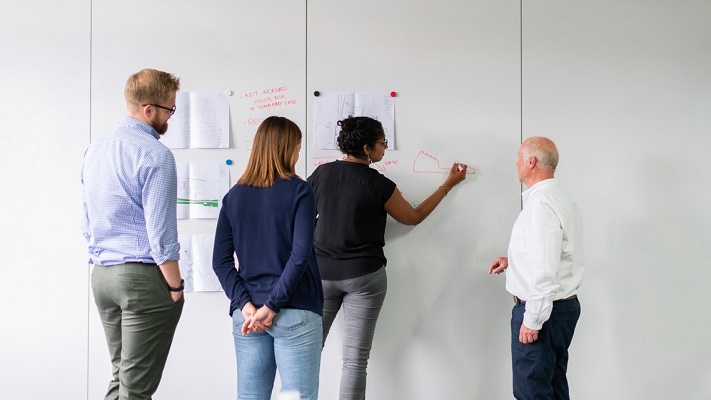![]()
Yes, of course, strategic decision must be taken by top leadership, who is accountable for that. But, are you sure that such a small group of senior people has the all relevant information to make an thoroughly informed decision?
We definitely doubt it.
- Front-line people know customers and markets much better than them.
- Operations people know procedures and processes much better than them.
- HR people know employees’ competencies and passions better than them.
- Product people know strengths and improvement areas of products better than them.
Do you think that it’s enough to let directors of each of those departments to represent all the instances raised and information collected by their collaborators, to design a great brand new strategy?
While I am perfectly sure that they will do their best, information will be lost when moving from the bottom to the top, causing poor, if not mistaken, strategy design.
Open Strategy is a relatively new concept who got increasing attention by companies in the last years, due to the difficulty in setting strategic objectives, themes and goals and letting them last even a few months in a world that is always changing.
The implication of this fluidity is that top leaders are getting every day more and more disconnected from the work floor where the value is created, neither to mention their distance from real customers.
Open Strategy means to involve more people (employees, experts, customers, suppliers) in the design game, leveraging on their actual knowledge and experience, inviting them to issue recommendations and proposals, that eventually the top leadership will evaluate, prioritize and select for execution.
Our experience tells that Agile and Design Thinking are of great value to the iterative process of information retrieval, validation, clustering, analyzing, then speculating on solutions and finally socializing prototypes to gather feedback which will feed the next design cycle. This normally ends after hypothesis and solutions prototypes have been validated and finally minimally but sufficiently documented to let senior leaders make informed decisions.
Forming Agile Strategy Design Teams
Usually strategy entails specific topics – e.g. innovation, quality improvement, cost saving, operational excellence, etc. For each of these topics, strategic themes are defined and, if you want to use Agile, a Product Owner – PO – shall be identified and appointed to each.
Therefore, the PO is in charge to:
- Gather any existing relevant information on the topic she needs to explore
- Draft an inspiring vision to target the objectives of that strategic theme
- Identify what competencies and skills are necessary to explore the topic and find possibile solutions
- Make initial hypothesis on how many people are necessary (for any specialties)
As the framework Scrum mandates, agile teams shall not be more than 11 people (Product Owner and Scrum Master included). Small teams reduce entropy, is more effective in communicating and straight to the point in decision making and producing value.
Now there is enough information (strategic theme, vision, competencies and skills, people necessary) to issue a recruiting ads. Transparency is key during this phase; it is mandatory to give detailed information on how the recruiting phase will be executed, how people will be chosen and duration of the process.
Once the right people have been interviewed and thus selected, is time for on-boarding them, forming the team and create the charter. This is another important moment, building teams is key for the success of the initiative.If you are looking for some good practices on how Design, Launch and Coach teams take a look to a previous post of mine.
Mixing Agile and Design Thinking
Team will work using the Scrum Framework, preferably having short iterations (one week is suggested).
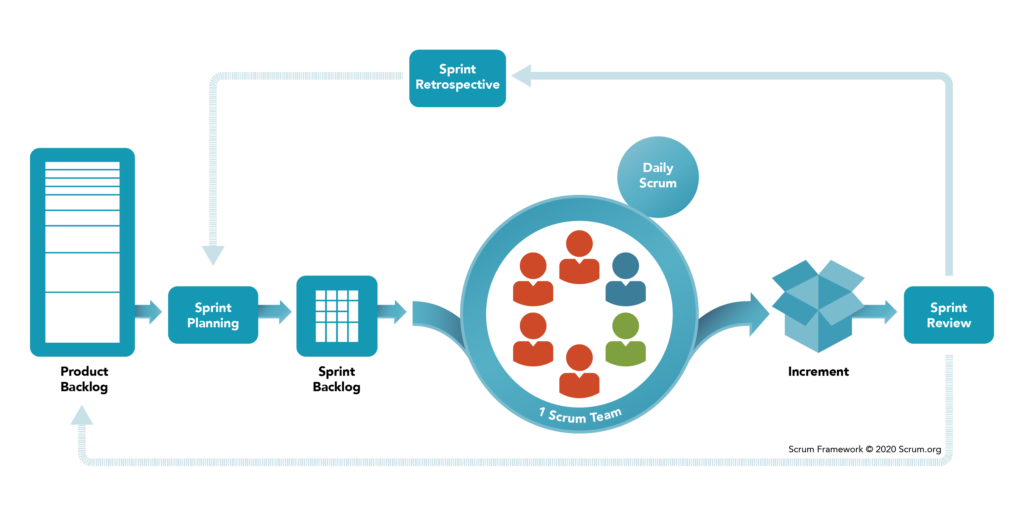
Within each iteration teams will go through the design thinking Double Diamond Model which suggests a Diverging/Converging approach to go through the acknowledgement of a problem, its definition and the identification of a solution:
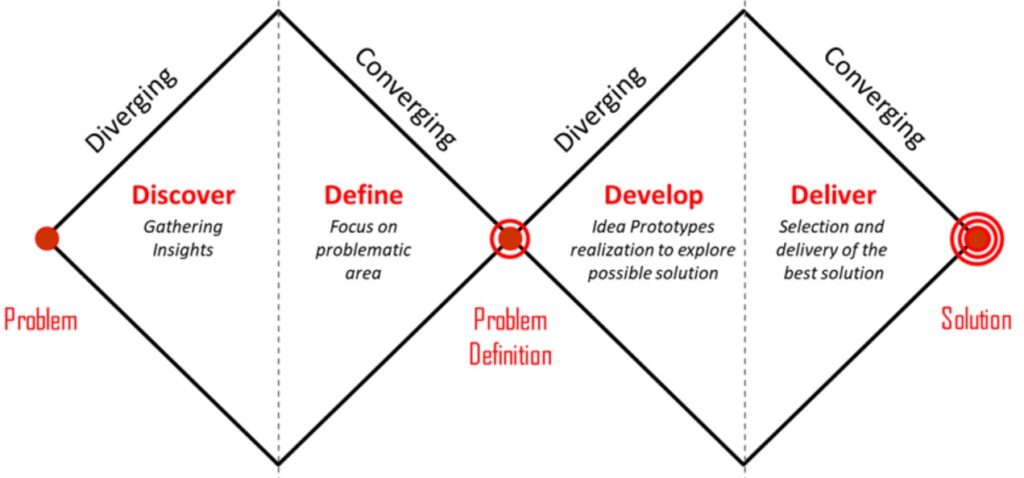
To be even more specific, the Agile-Design teams during their sprints will follow specific steps in empathizing with the people involved (both employees of the company or any other external people like customers, suppliers, etc.) according the topic they are exploring that could help in defining what problem they are trying to solve.
Then once the problem POV (point of view) has been formulated, they are ready to start the creative phase of ideation and prototyping which are the most exciting and energizing. Usually the loop is closed with the testing phase who brings the whole Agile-Design team in front of the people who they are designing for, literally bringing the prototype in their hands to be tested, challenged, used.
A great starting point is the EDIPT process from Stanford d.school whose acronym represents the following:
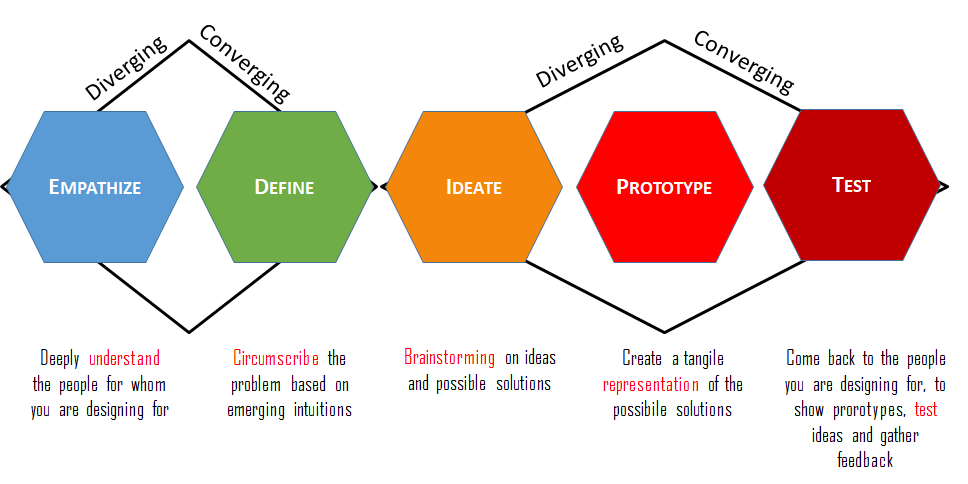
If the strategic theme we are exploring is innovation, then a prototype could be any low-fidelity mock-up of new products or services; however, in case we are trying to design a new operating model probably the prototype could be flip-charts with colored stickies representing steps, people, procedures, connected by arrows and surrounded by shapes of any types.
Encapsulating Design Thinking within Scrum is so powerful because both are iterative, collaborative and are born for solving complex problems: twins in crime!
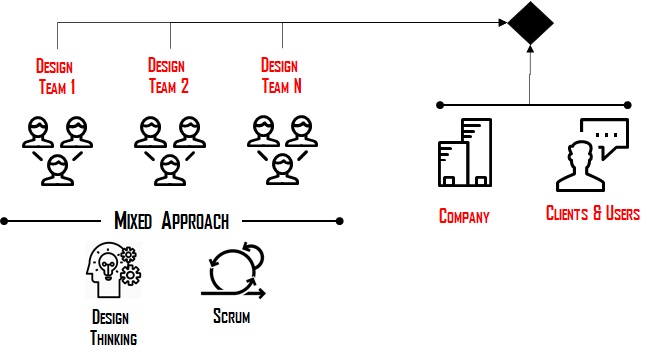
Open Strategy Design Outcomes
The Agile-Design teams usually have a mission which needs to be achieved within a certain number of iterations. Every produced outcome is tested and socialized within the organization.
Results are then collected and described in a document with specific recommendations of candidate strategic initiatives, accompanied by the hypotesis formulated, the experiments executed and the feedback from the users which tested them.
These candidate strategic initiatives are presented to the top-leadership which include them in a dedicated portfolio and prioritized by importance.
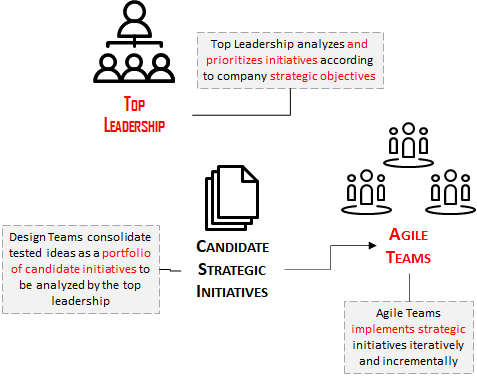
This is the last step, the most valuable and important initiatives are selected and finally executed. Oh,I was forgetting…of course also for this last phase do remember to use Agile to adapt and react to the always changing world.
Enjoy!

